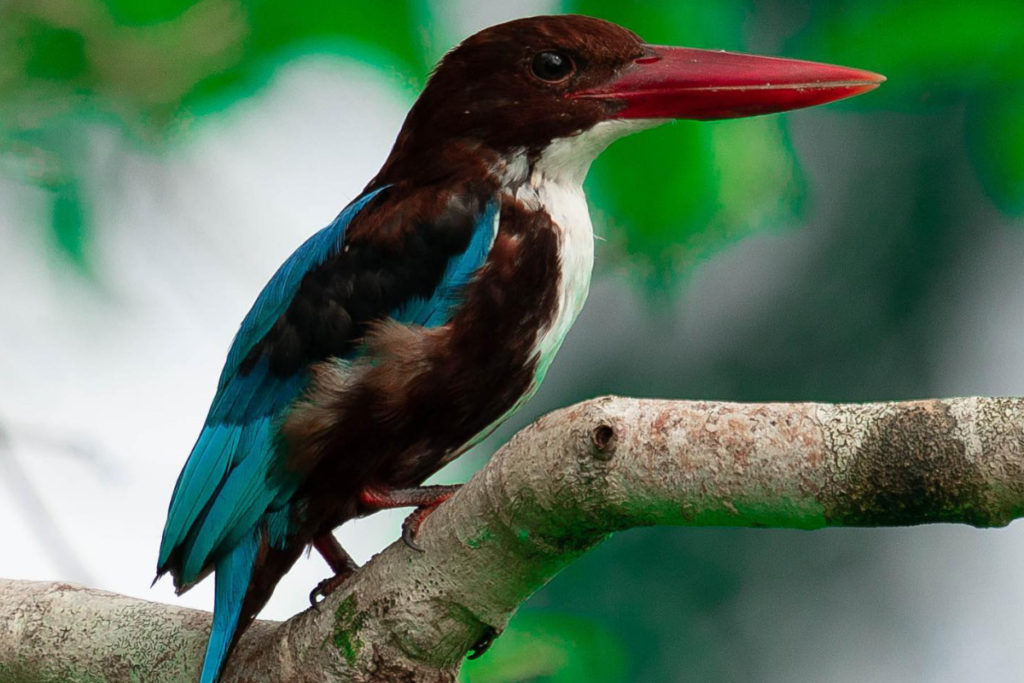Blog Details

Wildlife Encounters in Andaman: Mangroves, Birds & Endangered Species
If paradise had a wild side, it would look like the Andaman Islands. Hidden away in the Bay of Bengal, these islands aren’t just about turquoise waters and white sandy beaches—they are a living museum of biodiversity. From tangled mangrove forests that guard the coastline to rare migratory birds that brighten the skies, and endangered species fighting for survival, the Andamans promise wildlife encounters that are both thrilling and humbling.
This isn’t just a destination for beach lovers. It’s a sanctuary for nature enthusiasts, eco-travelers, and curious souls seeking a deeper connection with the natural world. Let’s dive into the fascinating world of the Andaman’s mangroves, birdlife, and endangered species.
The Magical Mangroves of Andaman
Mangroves are the guardians of the Andaman coast. These salt-tolerant trees form dense forests along the shoreline, acting as buffers against storms, waves, and erosion. But beyond their protective role, mangroves are teeming with life—both above and below the water.
Why Mangroves Matter
· They act as nurseries for fish, crabs, and shrimps.
· Provide roosting and breeding grounds for birds.
· Store carbon at higher rates than many rainforests, making them climate heroes.
In Andaman, nearly 20% of the country’s mangrove cover thrives, with species like Rhizophora, Sonneratia, and Avicennia dominating the landscapes.

Exploring the Mangroves
One of the best ways to explore these mysterious forests is through mangrove creek boat rides in places like Baratang Island and Yerrata Mangrove Park. As you drift through narrow water channels shaded by arching roots, you’ll feel like entering another world—calm, green, and alive.
Birds of Andaman: A Paradise for Birdwatchers
The Andamans are a birdwatcher’s delight, with over 270 species of birds, including 39 species that are endemic—found nowhere else on Earth. Whether you’re a casual traveler or an avid birder, spotting these feathered beauties is an experience of a lifetime.
Endemic Birds You Must Look Out For
· Andaman Woodpecker – With its striking red crown, this bird is easy to spot among tall trees.
· Andaman Serpent-Eagle – A majestic predator soaring across the skies.
· Andaman Drongo – Known for its glossy black feathers and mimicry skills.
· Narcondam Hornbill – Found only on the remote Narcondam Island, this bird is a symbol of Andaman’s fragile ecosystem.

Best Birdwatching Spots
· Chidiya Tapu (literally “Bird Island”) – Sunset views plus diverse birdlife.
· Mount Harriet National Park – A haven for endemic species.
· Lohabarrack Crocodile Sanctuary – Where wetlands meet wildlife.
Endangered Species of Andaman: A Fragile Treasure
While the Andamans are rich in biodiversity, they are also home to several species on the brink of extinction. These endangered animals remind us of the delicate balance between human activity and wildlife conservation.
Marine Turtles
The sandy beaches of Andaman are critical nesting sites for four species of sea turtles:
· Olive Ridley
· Green Turtle
· Hawksbill Turtle (Critically Endangered)
· Leatherback Turtle (the largest, yet most threatened)
Best Spot: Diglipur’s Kalipur Beach is one of the few places in the world where you can see multiple species nesting together.
Saltwater Crocodiles
The creeks and mangrove swamps are home to saltwater crocodiles, the largest living reptiles. Though sightings in tourist areas are rare, guided tours in sanctuaries let you safely observe them.

Dugongs (Sea Cows)
The Dugong, also called the “gentle sea cow,” is the state animal of Andaman. These slow-moving herbivores graze on seagrass beds but are highly endangered due to habitat loss.
Other Rare Species
· Andaman Horseshoe Crab – A living fossil, more than 450 million years old.
· Andaman Day Gecko – Bright green and endemic to the islands.
· Marine mammals like dolphins and whales spotted offshore.
Wildlife Conservation Efforts in Andaman
Protecting this unique ecosystem isn’t easy. The Andaman administration, NGOs, and local communities are working tirelessly to balance tourism with conservation.
Key Initiatives
· Marine National Parks like Mahatma Gandhi Marine National Park safeguard coral reefs and marine life.
· Wildlife Sanctuaries such as Interview Island and North Reef Island protect critical habitats.
· Community Participation: Local fisherfolk are trained to protect turtle nests instead of harvesting eggs.
What You Can Do as a Traveler
· Avoid disturbing nesting turtles or touching corals while snorkeling.
· Use eco-friendly sunscreens that don’t harm marine life.
· Support local eco-tourism initiatives.

How to Experience Andaman’s Wildlife Responsibly
Traveling to Andaman is more than a vacation—it’s a chance to witness fragile ecosystems and contribute to their survival. Here’s how you can plan your trip for maximum impact:
· Book guided tours with certified naturalists for mangrove safaris.
· Carry binoculars and a camera for birdwatching.
· Visit during turtle nesting seasons (December–March) for a magical experience.
· Stay at eco-resorts that support sustainable practices.
Conclusion: A Wild Side of Paradise
The Andaman Islands are more than just a postcard-perfect destination—they are a living, breathing wilderness. From the tangled embrace of mangroves to the fluttering wings of endemic birds and the determined survival of endangered species, every corner tells a story of resilience and beauty.
If you’re planning your trip, don’t just stick to the beaches. Venture into the wild. Experience the pulse of nature. And remember, every responsible step you take ensures that future generations can witness the same wonders.
Ready to explore the wild side of Andaman? Start planning your adventure at Fascinating Andaman and let nature be your guide.
Search
Categories
Recent Posts







